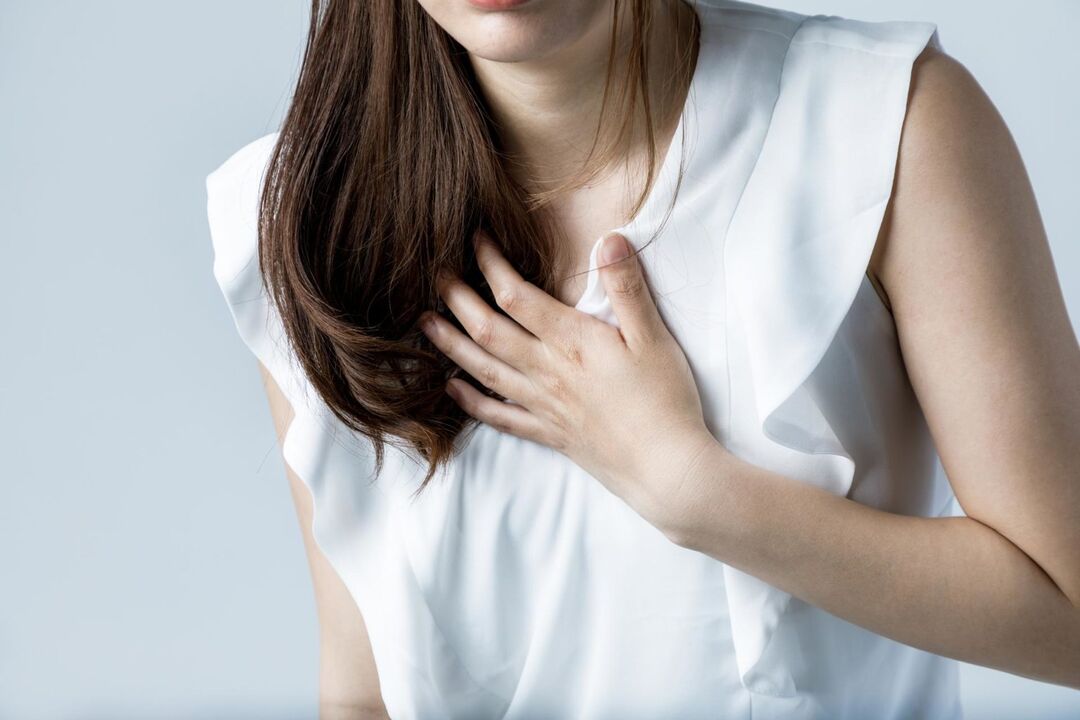Chest osteochondrosis is an unpleasant disease that has a long and often imperceptible development. The disease occurs due to disruption of normal function and degenerative destruction of part of the vertebrae. In contrast to the cervical and lumbar regions, it is much less likely to suffer from osteochondrosis due to the low mobility of the thoracic region.

Symptoms of chest osteochondrosis are 1 degree
Grade 1 osteochondrosis does not show any distinctive symptoms, so a person decides to seek help from a doctor. Often, the resulting disease is confused with other pathologies of the body: arrhythmia, pneumonia, gastritis. Due to inactivity, the disease continues to progress, taking a more severe clinical picture.
The almost asymptomatic course of grade 1 osteochondrosis is explained by the structure of the spine. However, there are some symptoms that are best to look out for when they appear:
- Feeling of pain in the chest area. It can be confused with intercostal neuralgia;
- Uncomfortable kickback in the shoulder;
- tingling in the heart, kidneys or stomach;
- Absence of obvious pain symptoms in the spine.
In stage 1, only the compaction and loss of elasticity of the cartilage intervertebral tissue occurs. The spine remains fairly mobile. Given that the disease occurs mainly in other parts of the body without immediate pathology, it is difficult to make a diagnosis.
Symptoms of grade 2 chest osteochondrosis
The transition of the disease to stage 2 means a decrease in the height of the intervertebral disc. As a result, the spine will be less stable and the vertebrae will receive unhealthy mobility. At this stage, patients experience severe pain, which indicates spinal problems.
In contrast to grade 1 disease, osteochondrosis of the grade 2 thoracic region is accompanied by pathological lesions that are difficult to return to a healthy state. The morphological symptoms of the disease are manifested in the rupture of the capsules and the development of protrusions. Cracking of the fibrous ring is a common occurrence at this stage. Therefore, painful feelings can be clearly felt directly in the affected area of the spine, which greatly simplifies the diagnosis. Clinically, such osteochondrosis looks like this:
- Recurrent pain in the chest area;
- Pinch in the chest.
- If you stay in a situation for a long time, you will feel uncomfortable;
- When he tries to put his hand behind his head, there are sharp pains;
- Low blood pressure;
- Appearance of scoliosis.
Grade 2 osteochondrosis is caused by a lack or poor quality of grade 1 disease.
Symptoms of chest osteochondrosis are 3 degrees
If grade 2 osteochondrosis is treated poorly or in a timely manner, the disease will progress to the next more dangerous stage 3.
Morphologically, partial or complete destruction of the fibrous ring occurs in the spine of a sick person. The ability of the vertebrae to fix and dampen is sharply reduced, leading to the formation of intervertebral protrusion and hernia, followed by pinched nerves. The symptoms are permanent and severe, causing complete discomfort:
- The appearance of sharp pains at the moment of coughing, deep breathing, or just laughing;
- Constant painful pain in the affected area of the back;
- Intercostal neuralgia;
- Feeling pain in the heart;
- Possible numbness and cramps in the limbs;
- Discomfort of hand mobility;
- Signs of biliary dyskinesia and inflammation of the pancreas;
- Painful tingling in the solar plexus.
Most of the above symptoms are persistent obsessive. After each dynamic or static load, there is a sharp increase in pain that persists even in a supine position. If this stage is also started, a bone marrow lesion occurs and disability occurs.
Treatment of chest osteochondrosis 2, 3 degrees
There is only a small fraction of the chance that the disease is going in the opposite direction. Basically, the treatment of grade 2 or 3 osteochondrosis results in slowing or stopping the degenerative progression of the disease.
All proposed methods and methods of treatment are divided into pharmacological and non-pharmacological therapies.
- Medical. The main directions of medications prescribed by a doctor are pain relief, stimulation of tissue microcirculation, and reduction of inflammation. Medications relieve unpleasant symptoms and improve the patient's well-being. Depending on the manifestation of the disease, a person with osteochondrosis may be prescribed pharmacotherapy that:
- Relieve persistent pain. Non-steroidal anti-inflammatory drugs are prescribed;
- Keep fluid in the cavity of the intervertebral disc. It is recommended to use papain;
- Relieves cramps and pinching. Muscle relaxants and antispasmodics help;
- Restore cartilage tissue to a healthier state. The reception of chondroprotectors is shown.
- Not a drug. This type of therapy alone and in combination with traditional treatment has a positive effect. There are many ways in the world to improve the condition of patients with osteochondrosis. The main ones are:
- Production of funds according to the recommendations of traditional medicine. It is used in infusions and decoctions of celery root or sunflower root in various ointments.
- Acupuncture;
- Assistance in manual and post-isometric therapy;
- Physiotherapy;
- Plastic massage;
- correction of the patient's lifestyle and diet;
- Traction and fixation of vertebrae.
Grade 3 osteochondrosis often requires surgery, among other methods. In addition, the listed drugs may be combined with hormonal drugs such as prednisone.
Osteochondrosis is a serious disease that requires attention. To prevent its development, it is recommended to perform various preventive procedures, adding physical education and following the rules of a healthy diet.



















